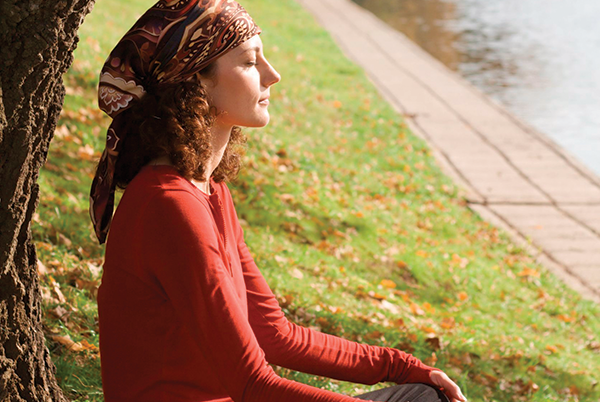Easing the Pain of Cancer
by Carrie Aigner, PhD, and Diane Novy, PhD
Have you ever noticed that when you are feeling sad or anxious you attend more to aches and pains in your body? When pain flares, you are more prone to experience negative emotions, such as fear, frustration, anger, and anxiety. Furthermore, when you are in pain, you may feel less like being active and socializing, making you even more susceptible to negative emotions.
Negative emotion can, in turn, lead to greater attention and focus on pain, thereby increasing your pain intensity. You can see how this process can easily turn into a vicious cycle of pain, inactivity, and negative mood.
Not surprisingly, cancer pain is strongly associated with psychological distress, anxiety, and depression. It is estimated that over half of people with cancer experience cancer-related pain, and some cancer survivors may have persistent and ongoing pain because of the disease or its treatment. Even with frontline treatments for cancer pain, including medication prescribed by your doctor, pain may persist. For some people, additional pain management strategies can help reduce pain and improve overall quality of life.
Pain may be a part of your life. However, it doesn’t have to control your life.
Imagery
This technique has considerable evidence to support its use for cancer pain management. Imagery can be used in times of stress, anxiety, and pain. To begin, select a mental image associated with feelings of peacefulness and calmness or with a positive experience. This image will vary by person, but common images include a relaxing beach or a nature scene. Incorporating multiple senses, such as the sounds, smells, and touch sensations associated with this image, can enhance the vividness of the image and the effectiveness of the technique.
When you have chosen an image, practice picturing this image in your mind, focusing on the details of the image. Try to create an environment conducive to relaxation by sitting in a comfortable chair or listening to relaxing music. As you practice this technique, you may notice that you focus less and less on your discomfort.
Active Lifestyle
You may have noticed that activity can lose its appeal when you are in a great deal of pain. You may also fear that doing certain activities will increase your pain, so you modify or stop these activities altogether. At first, this may seem to help. By keeping the area of pain still or stiff, you can prevent or minimize the pain. However, over the long term, these modifications can be harmful, causing muscle weakness, tendon atrophy, and even increased pain.
When you are experiencing pain, finding a good balance between activity and rest can help you keep your body fit. A good way to strike this balance is to pace your activities by breaking up large tasks into smaller, more manageable segments. You may also try keeping an activity log to help motivate you into action. Being active can help improve your mood and provide a welcome distraction from the pain.
As always, you should talk to your doctor before making major alterations to your activity level.
For many people with cancer, pain may be a part of your life. However, it doesn’t have to control your life. These pain management strategies can help draw your attention away from the pain, improve your mood, and reduce the impact that pain has on your everyday life. With these tools, you can live a full, active life – despite your pain.

Dr. Carrie Aigner is a postdoctoral fellow in Psychology at the University of Texas MD Anderson Cancer Center with a combined research-clinical appointment in the departments of Pain Medicine and Behavioral Science.

Dr. Diane Novy is a professor in the department of Pain Medicine at the University of Texas MD Anderson Cancer Center.
This article was published in Coping® with Cancer magazine, November/December 2011.


